When it comes to trekking, the Annapurna Circuit Trek stands out as a must-do adventure for those craving a mix of challenge and beauty. It takes trekkers through diverse landscapes, from lush valleys to the heights of Thorung-La Pass, all while immersing them in local culture. But it’s not just about the stunning views; it’s also about the stories shared with locals and the sacred sites visited along the way. As they gear up for the trek, many wonder what to expect in terms of preparation and logistics—so what’s the best way to tackle this iconic journey?
Key Points

- The Annapurna Circuit Trek lasts two weeks, starting from Besisahar and featuring diverse landscapes and cultural experiences.
- Key highlights include stunning mountain views, the deepest gorge in the world, and the sacred Temple of Muktinath.
- The trek involves navigating challenging terrains, including the Thorung-La Pass at an elevation of 5,416 meters.
- Accommodation includes 2 nights in a 3-star hotel and 10 nights in teahouses, with three meals provided daily.
- Essential preparations include physical fitness, proper trekking gear, acclimatization, and securing necessary travel permits and insurance.
Overview of the Trek
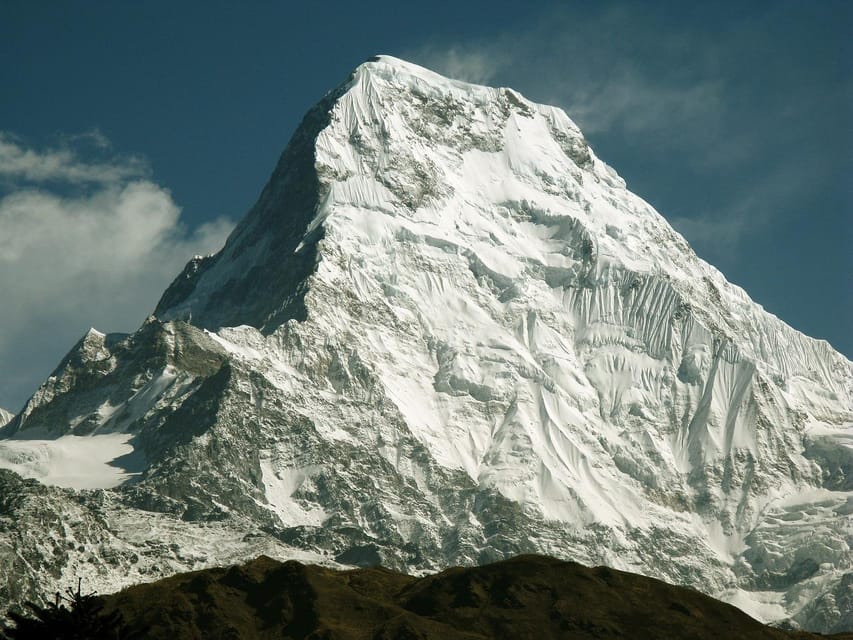
Embarking on the Annapurna Circuit Trek offers adventurers an unforgettable journey through Nepal’s stunning landscapes, where breathtaking views and rich cultural experiences await at every turn.
This two-week trek, starting from Besisahar, challenges both body and spirit as trekkers navigate diverse terrains—from lush forests to high-altitude plains. With the Thorung-La Pass looming at 5,416 meters, it’s not just a walk in the park; it’s an epic adventure.
Trekkers can expect to encounter local villages filled with warm-hearted people, as well as picturesque terraced fields and dramatic mountain vistas.
The trek’s structure is designed to immerse participants in Nepal’s unique topography and culture, making it a must-do for any outdoor enthusiast seeking a transformative experience.
You can also read our reviews of more tours and experiences in Muktinath.
Trekking Highlights
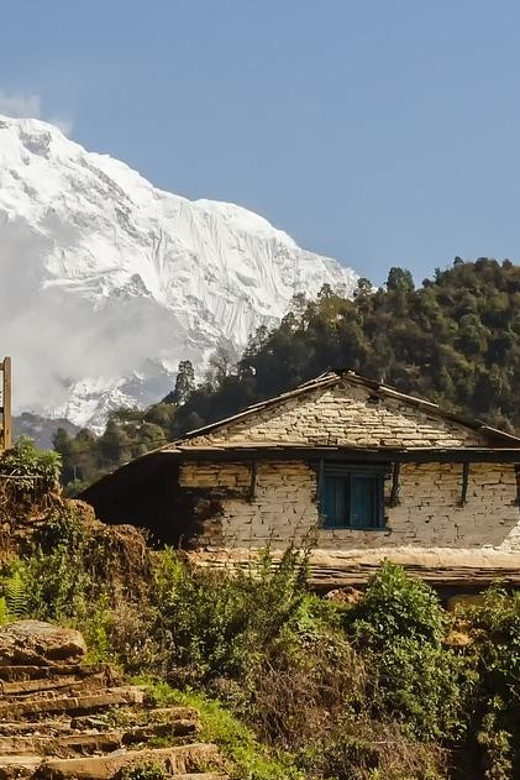
Trekkers on the Annapurna Circuit can look forward to unforgettable moments, from awe-inspiring mountain views to encounters with vibrant local culture along the way. They’ll be treated to breathtaking sights of the Annapurna and Dhaulagiri ranges, creating perfect photo ops at every turn.
One highlight is the chance to visit the Kali Gandaki Gorge, the world’s deepest gorge, where nature’s grandeur really shines. Plus, the sacred Temple of Muktinath awaits, offering a glimpse into the spiritual heart of the region.
Along the trek, they’ll stroll through charming villages, sharing smiles and stories with warm-hearted locals. These experiences make the Annapurna Circuit not just a trek, but a journey rich in beauty and culture that stays with trekkers long after they return home.
Detailed Itinerary
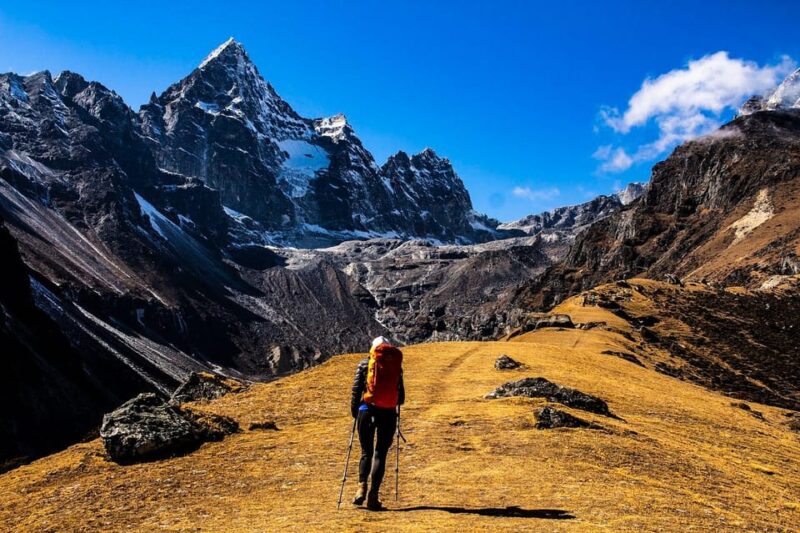
The detailed itinerary for the Annapurna Circuit Trek takes adventurers on a thrilling two-week journey filled with stunning landscapes and cultural experiences.
Kicking off in Besisahar, trekkers navigate through lush forests and charming villages, soaking in the local culture. Each day, they tackle a mix of challenging ascents and rewarding descents, leading to the majestic Thorung-La Pass.
After conquering the pass, they’ll descend to Jomsom, where a scenic flight offers breathtaking views of the Kali Gandaki Gorge.
Every step of the way, trekkers experience the warmth of Nepali hospitality, making the trek not just a physical adventure, but also a culture.
It’s truly a journey that leaves lasting memories and a sense of accomplishment.
Essential Inclusions
When planning for the Annapurna Circuit Trek, it’s important to know what inclusions will make the journey smoother and more enjoyable. Here’s a quick rundown of what you can expect on this epic adventure:
| Inclusions | Details |
|---|---|
| Airport Transfers | Convenient transport to and from the airport |
| Accommodation | 2 nights in a 3-star hotel, 10 nights in teahouses |
| Meals | Three meals daily during the trek |
| Guide and Porter | Experienced guide and porter provided |
| Permits | ACAP and TIMS card included |
These essentials set the stage for an unforgettable trek, ensuring you can focus on the stunning landscapes and rich culture without any hassle!
More Great Tours NearbyPreparation Tips
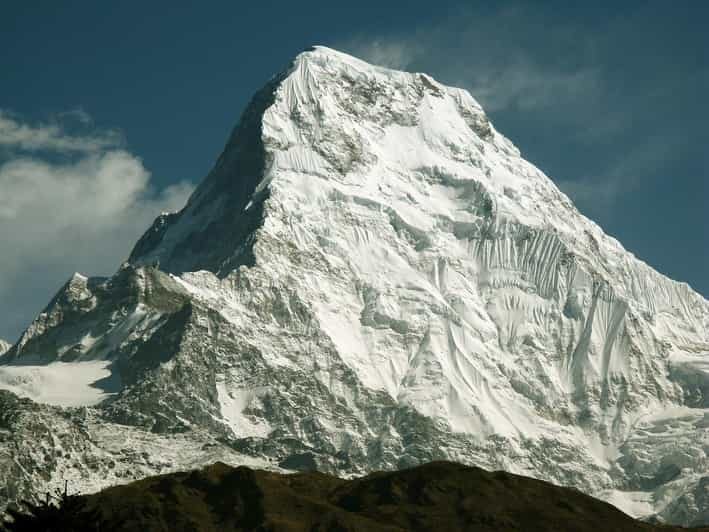
Preparing for the Annapurna Circuit Trek involves more than just packing; it’s about setting yourself up for an unforgettable adventure in the heart of the Himalayas.
First, get in shape! Regular cardio and strength training will help tackle those steep ascents.
Next, gear up with good-quality hiking boots, breathable layers, and a solid backpack. Don’t forget your trekking poles—they’re lifesavers on tough trails!
Acclimatization is key, so plan for some rest days to adjust to the altitude. Also, hydrate like it’s your job, and pack snacks for energy boosts.
Finally, make sure you have travel insurance and necessary permits sorted out before you go.
With these tips in hand, you’re ready to embark on an epic journey!
- Kathmandu: 12 Day Upper Mustang & Lower Mustang 4W Jeep Tour
- Nepal Odyssey: A Spiritual Journey – Kathmandu to Muktinath
- From Kathmandu Budget: 12 Day Annapurna Circuit Trek
- Lower Mustang & Muktinath MotorBike Tour – 9 Days
- Pokhara: 9-Day Annapurna Circuit Trek
- From Kathmandu: Budget 9 Day Annapurna Circuit Trek
Local Culture and Interactions
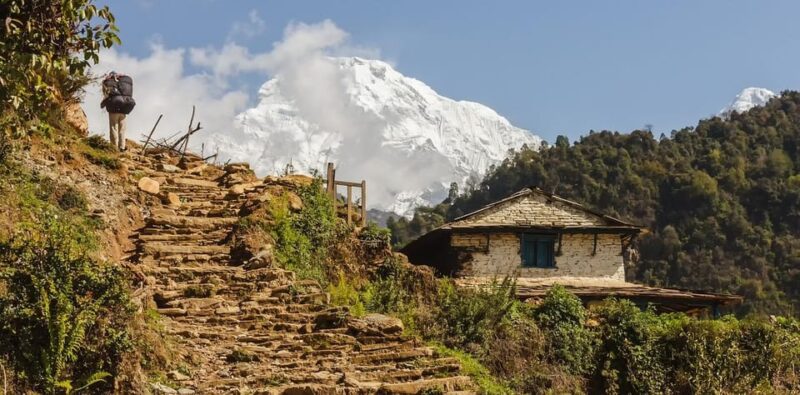
Enjoy the vibrant local culture as trekkers pass through charming villages and interact with friendly locals, who often share stories and traditions that enrich the journey. These interactions offer a glimpse into the lives of the Gurung, Thakali, and Magar communities, each with unique customs and hospitality.
| Community | Unique Tradition | Must-Try Dish |
|---|---|---|
| Gurung | Traditional dance | Dal Bhat |
| Thakali | Local handicrafts | Thakali Thali |
| Magar | Folk songs and storytelling | Gorkhali Beer |
| Tibetan | Prayer flags and rituals | Momos |
| Nepali | Festivals and celebrations | Sel Roti |
These experiences create unforgettable memories and foster a deeper appreciation for Nepal’s rich cultural tapestry.
Environmental Considerations
The Annapurna Circuit Trek emphasizes the importance of preserving its stunning landscapes and delicate ecosystems, making eco-friendly practices essential for all trekkers.
To minimize their impact, trekkers should stick to marked trails and avoid shortcuts that could harm local flora. Carrying out all trash, including food wrappers and biodegradable waste, is a must—leave no trace!
Many teahouses encourage sustainable practices, so opting for local meals and staying hydrated with refillable water bottles helps reduce plastic waste. Supporting local conservation initiatives also keeps the region thriving.
Travel Logistics and Costs
Planning a trek on the Annapurna Circuit means considering a mix of travel logistics and costs to ensure a smooth adventure.
First off, budget around K₨43,627 per person for the trek itself. This typically covers your accommodation, meals, and experienced guides.
Don’t forget about extra expenses like lunch and dinner in Kathmandu and Pokhara, travel insurance, and tips for your guides and porters.
Getting your Nepal Entry Visa upon arrival is a breeze, costing around USD 50 for 30 days. Plus, you’ll need permits like the Annapurna Conservation Area Permit and TIMS card.
To really enjoy the trek, participants should pack smart and come prepared for varying conditions, ensuring a worry-free experience on this stunning route!
Frequently Asked Questions
What Is the Best Time to Trek the Annapurna Circuit?
The best time to trek’s usually in spring or autumn. During these seasons, the weather’s mild, views are stunning, and the trails aren’t overcrowded, making it perfect for those seeking a memorable adventure.
How Physically Fit Do I Need to Be for the Trek?
To tackle the trek, they’ll need decent fitness. Regular walking, some hill workouts, and endurance training will help. It’s not a stroll in the park, but with preparation, they’ll manage just fine!
Can I Trek Without a Guide or Porter?
He can trek without a guide or porter, but it’s risky. Navigating trails and managing altitude can be tough alone. Experienced trekkers might enjoy the challenge, but it’s wise to consider local regulations and safety.
What Should I Do in Case of Altitude Sickness?
If someone experiences altitude sickness, they should descend immediately, stay hydrated, and rest. Over-the-counter medications can help, but it’s vital to seek professional help if symptoms persist or worsen. Listening to one’s body is key!
Are There ATMS Along the Annapurna Circuit?
While there aren’t many ATMs along the route, travelers can find a few in larger towns. It’s best to withdraw cash in advance and keep it handy for meals and accommodations.
Recap
The Annapurna Circuit Trek isn’t just another hike; it’s an unforgettable journey through stunning landscapes and rich culture.
Trekkers get to challenge themselves while soaking in the awe-inspiring views and connecting with local communities.
With the right prep and a sense of adventure, this trek promises memories that last a lifetime.
So, lace up those boots, pack your bags, and get ready for an experience that’ll leave you in awe of Nepal’s beauty and spirit!
You can check availability for your dates here:More Hiking & Trekking Tours in Muktinath
- From Kathmandu : 10 – Day Adventurous Annapurna Circuit Trek
- Pokhara: 11 – Day Annapurna Circuit Guided Trek Via Tilicho
- Nepal: Manang-Tilicho Lake-Thorong La Pass Circuit Trek
- Kathmandu/Pokhara: Annapurna Circuit Trek 10 days
- Annapurna Circuit & Nar-Phu Valley Trek-18 Days
- Annapurna Circuit Trek with Tilicho Lake 16 Days
More Tour Reviews in Muktinath
Not for you? Here's more nearby things to do in Muktinath we have reviewed
- Upper Mustang Motorbike Tour-12 Days
- From Kathmandu : 10 – Day Adventurous Annapurna Circuit Trek
- Gangapurna Expedition 2025 | 2026
- Pokhara: 11 – Day Annapurna Circuit Guided Trek Via Tilicho
- Muktinath Temple Tour Package 6N 7D
- Nepal: Manang-Tilicho Lake-Thorong La Pass Circuit Trek
- Kathmandu/Pokhara: Annapurna Circuit Trek 10 days
- Annapurna Circuit & Nar-Phu Valley Trek-18 Days
- Annapurna Circuit Trek with Tilicho Lake 16 Days
- Annapurna Circuit Trek 12 Days
- Annapurna Circuit Trek 15 Days
- Discover the Lower Mustang : Exclusive Private Tour
